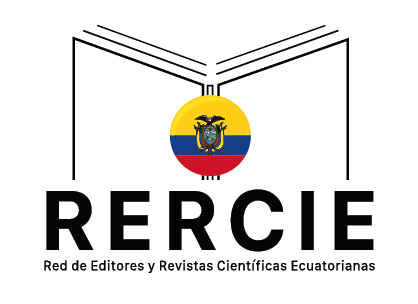Transforming Lasswell´s linear model in the digital football discourse: The level of Youtube communication
DOI:
https://doi.org/10.36097/rsan.v0i52.2048Palabras clave:
modelo de comunicación de lasswell, discurso futbolístico, narrativa de medios digitales,Resumen
El objetivo del estudio fue explicar cómo la especificidad comunicativa del entorno digital está cambiando el modelo lineal tradicional de Lasswell. Son explorados los cambios que se producen en las unidades estructurales del modelo. Este complejo escenario se examinó a partir del material de 18 blogs de YouTube de éxito dedicados al fútbol, que tienen una audiencia de más de 1,5 millones de suscriptores, un exitoso componente comercial y una escala global de distribución de contenidos. Se comprobó que el moderno ecosistema del periodismo deportivo (el "¿Quién?" y el "¿A quién?" de Lasswell) está experimentando importantes transformaciones en términos de contenido y estructura. Y el hecho de que el periodismo digital moderno ya sea percibido por los usuarios como parte de la vida cotidiana cambia el papel de los creadores de contenidos y de los que consumen estos contenidos. El elemento "¿Con qué efecto?" sigue siendo relevante y el más cercano al clásico, que debido a la interactividad y a la capacidad de objetivar al máximo la efectividad del contenido en los medios sociales, puede convertirse en el principal factor conceptual de la narrativa digitalen el periodismo deportivo moderno
Descargas
Referencias
Billings, A. C., Qiao, F., Conlin, L., & Nie, T. (2016). Permanently Desiring the Temporary? Snapchat, Social Media, and the Shifting Motivations of Sports Fans. Communication & Sport, 5(1), 10–26. https://doi.org/10.1177/2167479515588760
Birkner, T., & Nölleke, D. (2016). Soccer Players and Their Media-Related Behavior. Communication & Sport, 4(4), 367–384. https://doi.org/10.1177/2167479515588719
Boyle, R. (2017). Sports Journalism. Digital Journalism, 5(5), 493–495. https://doi.org/10.1080/21670811.2017.1281603
David, A., & Robert, S. (1979). Media logic. Sage.
Deacon, D., & Stanyer, J. (2014). Mediatization: key concept or conceptual bandwagon? Media, Culture & Society, 36(7), 1032–1044. https://doi.org/10.1177/0163443714542218
Ekenel, H. K., & Semela, T. (2011). Multimodal genre classification of TV programs and YouTube videos. Multimedia Tools and Applications, 63(2), 547–567. https://doi.org/10.1007/s11042-011-0923-x
Ekström, M., Fornäs, J., Jansson, A., & Jerslev, A. (2016). Three tasks for mediatization research: contributions to an open agenda. Media, Culture & Society, 38(7), 1090–1108. https://doi.org/10.1177/0163443716664857
Ferrucci, P. (2021). Joining the Team: Metajournalistic Discourse, Paradigm Repair, the Athletic and Sports Journalism Practice. Journalism Practice, 1–19. https://doi.org/10.1080/17512786.2021.1907213
Football research in an enlarged Europe: Identity dynamics, perception patterns and cultural change in Europe’s most prominent form of popular culture. (2015). CORDIS | European Commission. https://cordis.europa.eu/project/id/290805/reporting/de
FootballHub will show the championship of Belarus on Youtube. (2020). UA-Football. https://www.ua-football.com/ua/ukrainian/news/1585325299-footballhub-pokazhe-chempionat-bilorusi-na-youtube.html
Frandsen, K. (2021). Sport And Mediatization. Routledge.
Hancherick, D. (2011). Tweet Talking: How Modern Technology and Social Media Are Changing Sports Communication. The Elon Journal of Undergraduate Research in Communications, 2(1), 15–21. https://www.elon.edu/u/academics/communications/journal/wp-content/uploads/sites/153/2017/06/02Hancherick.pdf
Hayes, G. (2010). Cross-Media | PERSONALIZE MEDIA. Media Made Personal - Augmented Locative Stories, Experiential Transmedia Games, Collaborative Social TV. https://www.personalizemedia.com/articles/cross-media/
Hepp, A., Hjarvard, S., & Lundby, K. (2015). Mediatization: theorizing the interplay between media, culture and society. Media, Culture & Society, 37(2), 314–324. https://doi.org/10.1177/0163443715573835
Hjarvard, S. (2008). The mediatization of society. Nordicom Review, 29, 102–131. https://www.nordicom.gu.se/sites/default/files/kapitel-pdf/269_hjarvard.pdf
Jenkins, H. (2004). The Cultural Logic of Media Convergence. International Journal of Cultural Studies, 7(1), 33–43. https://doi.org/10.1177/1367877904040603
Jenkins, H. (2006). Convergence culture : where old and new media collide. New York University Press, Dr.
Knut Lundby. (2014). Mediatization of communication. De Gruyter.
Kuzma, J., Bell, V., & Logue, С. (2014). A Study of the Use of Social Media Marketing in the Football Industry. Journal of Emerging Trends in Computing and Information Sciences, 5(10), 728–738. http://citeseerx.ist.psu.edu/viewdoc/download;jsessionid=602D8ED44F562D786C445CCE542A35B0?doi=10.1.1.680.9446&rep=rep1&type=pdf
Lasswell, H. D. (1948). The structure and function of communication in society. In L. Bryson (Ed.), The communication of ideas (pp. 37–51). Harper and Row.
Lewis, N., & Weaver, A. J. (2013). More Than a Game. Communication & Sport, 3(2), 219–242. https://doi.org/10.1177/2167479513508273
Maliienko, I., & Kyrylova, O. (2020). Specificity of modern sports communication (based on H. Lasswell’s communication model). Mass Communication in Global and National Dimensions, 13, 79–83. https://doi.org/10.5281/zenodo.3860062
McQuail, D., & Deuze, M. (2020). Mcquail’s Media And Mass Communication Theory. Sage Publications.
McQuivey, J. L. (2017, October 7). By 2025, 50% of adults under age 32 will not pay for TV. Forrester. https://go.forrester.com/blogs/15-10-07-by_2025_50_of_adults_under_age_32_will_not_pay_for_tv/
Nölleke, D., & Scheu, A. M. (2017). Perceived Media Logic: A Point of Reference for Mediatization. Media Logic(S) Revisited, 195–216. https://doi.org/10.1007/978-3-319-65756-1_10
Nölleke, D., Scheu, A. M., & Birkner, T. (2020). The Other Side of Mediatization: Expanding the Concept to Defensive Strategies. Communication Theory, 31(4). https://doi.org/10.1093/ct/qtaa011
Parker, G. (2017, April 16). Gary Lineker and Match of the Day feature in NBC’s Premier League plans. The Guardian. https://www.theguardian.com/sport/2013/apr/16/nbc-premier-league-match-of-the-day
Pashchenko, B., Kyrylova, O., Pavlenko, V., & Blynova, N. (2021). The Implementation of a New Pop-Cosmopolitanism Concept in the Process of Mediatization of Japanese Mass Culture. Journal of Print and Media Technology Research, 10(3), 179–192. https://doi.org/10.14622/JPMTR-2105
Pedersen, P. M. (2017). Routledge Handbook of Sport Communication. Routledge.
Rivers, D. J., & Ross, A. S. (2019). “This channel has more subs from rival fans than Arsenal fans”: Arsenal Fan TV, football fandom and banter in the new media era. Sport in Society, 24(6), 1–20. https://doi.org/10.1080/17430437.2019.1706492
Rowe, D. (2016). Sports Journalism and the FIFA Scandal. Communication & Sport, 5(5), 515–533. https://doi.org/10.1177/2167479516642206
Schulz, W. (2004). Reconstructing Mediatization as an Analytical Concept. European Journal of Communication, 19(1), 87–101. https://doi.org/10.1177/0267323104040696
Shaparenko, O. (2013). Deliberative function of social network. Vìsnik HarkìvsʹKogo NacìonalʹNogo Pedagogìčnogo Unìversitetu Ìmenì G.S. Skovorodi. Fìlosofìâ, 1(41).
Skey, M., Stone, C., Jenzen, O., & Mangan, A. (2017). Mediatization and Sport. Communication & Sport, 6(5), 588–604. https://doi.org/10.1177/2167479517734850
Toffler, A. (1981). The Third Wave. Bantam Books.
Waisbord, S. (2013). A metatheory of mediatization and globalization? Journal of Multicultural Discourses, 8(3), 182–189. https://doi.org/10.1080/17447143.2013.822504
Wenxiu, P. (2015). Analysis of new media communication based on Lasswell’s “5W” model. Journal of Educational and Social Research, 5(3). https://doi.org/10.5901/jesr.2015.v5n3p245
Whannel, G. (2013). Reflections on Communication and Sport. Communication & Sport, 1(1-2), 7–17. https://doi.org/10.1177/2167479512471335



















